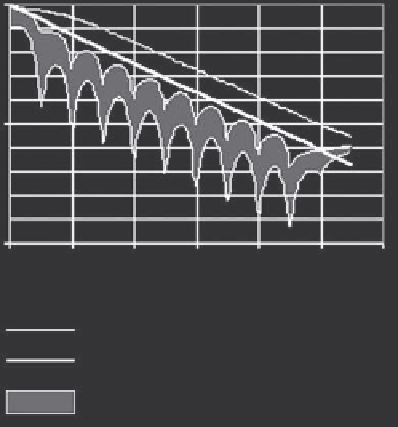Biomedical Engineering Reference
In-Depth Information
C
' (dimensionless)
1
0.95
0.9
0
2
4
6
8 10
X
' (dimensionless)
12
Oxygen concentration on the pore axis
Analytical 1 D approach
Variation in oxygen concentration
on the pore surface
FIGURE 3.12
Longitudinal distribution profile of the dimensionless oxygen concentration
in the representative elementary volume of the pore channel. Comparison
between one- and three-dimensional modeling approaches shows that, under
the assumed experimental conditions and at the scale of the overall pore
length, the transport phenomena are convection dominated. The variation
in local surface distribution of the feeding oxygen concentration (gray shaded
area) is mainly due to the presence of stagnation zones in the vicinity of the
close contact between two adjacent fibers.
mechanical stimulation (0, 0.1, and 1.0 dyne cm
−
2
viscous shear stress depend-
ing on the flow rate). In this framework, a mathematical model of oxygen
transport within the dual chamber parallel-plate bioreactor presented in Fig-
ure 3.13 was defined and numerically solved (Pierre et al
.
2008).
The parallel-plate bioreactor (Gemmiti and Guldberg 2006) is constituted
of three distinct domains: a tissue-engineered rectangular slab of cartilage,
which is enveloped by an upper chamber in which the media flows, and a
lower chamber which acts as a reservoir of nutrient. Via the control of nutri-
ent media flow rate in the upper chamber, different mechanical stimulation
of cells were applied to obtain a tissue construct with mechanical proper-
ties (Young's modulus, ultimate strength) and matrix composition approach-
ing those of natural cartilage. The question is then to know if varying the
flow rate in the bioreactor consequently leads to a significant and quantifi-
able change in the oxygen feeding of the cells embedded in the engineered
tissue.


Search WWH ::

Custom Search